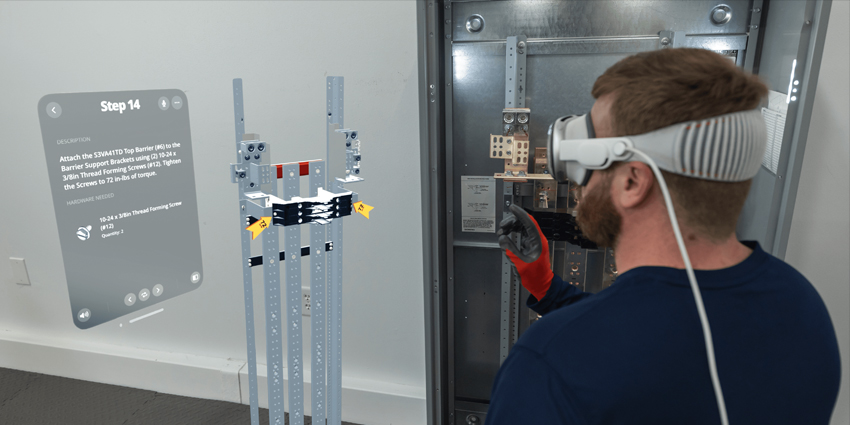Mixed reality (AR/MR) startup Thirdeye recently announced a partnership with Hong Kong-based IT vendor GO VR Immersive to expand availability of its X2 MR smart glasses to the Asia-Pacific (APAC).
Thanks to the new partnership, the Princeton-based startup is now suppling headsets to APAC frontline workers in education, architecture, and industrial environments with their rugged MR solution.
XR Today spoke with Nick Cherukuri, CEO and Founder of ThirdEye, to learn more about his company’s latest partnership and global expansion strategy.
Inside Thirdeye
XR Today: Why did you partner with Go VR Immersive to extend your reach to APAC regions?
Nick Cherukuri: Go VR came from one of our international distributors, and we spent a lot of time talking with them to create this partnership.
They have an extensive reach in the Hong Kong region as well as neighbouring countries, and they definitely liked our product in terms of technical features such as its 30-megapixel camera resolution and ease of application development on it.
Go VR also works on the HoloLens as well, but we had some other features they liked such as our lower selling price, use of the Android operating system, and our all-in-one solution [products].
Bridging the gap between our physical & digital worlds is as simple as putting a pair of X2 MR Glasses on🕶️
This new version of our reality is providing first responders with the necessary tools to administer the highest quality of patient care.
More: https://t.co/qq8BwsPQaM pic.twitter.com/ZucQReTFd1
— ThirdEye Gen, Inc. (@ThirdEyeGen) October 18, 2021
Our headsets are also very lightweight at around 10 ounces, and this [along with other things] help us deploy our devices more easily to the education market.
We also have built-in device management software, which is crucial for the educational space, because it’s important that devices are secure for applications students use on the smart glasses.
Our device management tools are really helping to move the needle [for our company]. We’ve had some unique advantages that Go VR liked and we hope to continue the partnership and keep it stronger.
XR Today: You mentioned you were targeting the education sector. Could you tell me any other markets in the APAC that Thirdeye and Go VR plan to target?
Nick Cherukuri: We do have sales in other areas [such as] Japan, Australia, and a few other countries in the region, primarily for [sectors such as] telehealth and education.
We have telehealth software that is compliant with the US Health Insurance Portability and Accountability Act (HIPAA), where someone can wear the smart glasses and an expert remote doctor can see exactly what the patient sees in real-time to give them live instructions.
This is something that’s really taking off now, both domestically and internationally.
We’re also talking to several Australian mining companies because our smart glasses are Hard Hat Certified and are ruggerdised. They can also be used in settings for remote telepresence help as well as overlaying 3D computer-aided design (CAD) models and 3D instructions.
We are seeing a growing number of use cases, and I would say our biggest markets right now are in healthcare, field services, and education.
Supporting Frontline Workers
XR Today: How are your XR2 smart glasses supporting frontline workers, especially during the COVID-19 pandemic?
Nick Cherukuri: Think of it as Google Meet or Zoom on steroids with AR, because not only do you have live video conferencing between two people, but you also have the ability to superimpose AR instructions onto the real world.
This is something that has really accelerated with COVID-19, because people can no longer travel as easily and you have one senior professor, teacher, or technician with decades of experience at home and 20 junior field technicians who need this knowledge transfer.
All of the groups can wear our smart glasses and senior experts can manage them all remotely.
So, this is something that helps companies not only educate their workers, but also save tremendous amounts of money and travel costs, and is also a major push for us for environmental sustainability.
We also help companies reduce their carbon footprint tremendously, and we’re planning to implement a carbon footprint tracker into our software. These companies, firms, and institutions can then say, “I’m saving this much by not having to go in-person everywhere now.”
XR Today: How does Thirdeye provide training and services for XR2 smart glass adopters?
Nick Cherukuri: Regarding support, I would say the most critical part of a successful deployment would probably be support, because for many of our users, it’s the first time they’re using AR and it’s something we put a lot of time and effort into optimising.
What we do on the support side is provide hour-long onboarding sessions for anyone who gets our smart glasses or software, where I explain to users all the features of their devices.
For larger groups, we go on-site and spend a week or two with teams to get their feedback and set everything up. So far, we’ve received really positive feedback, and we have some very successful domestic and international deployments, which we’re continuing to grow.
We’re always looking to improve, and I think listening to customer feedback is a really critical part of the startup support process, which we make a big focus for all of our clients.







